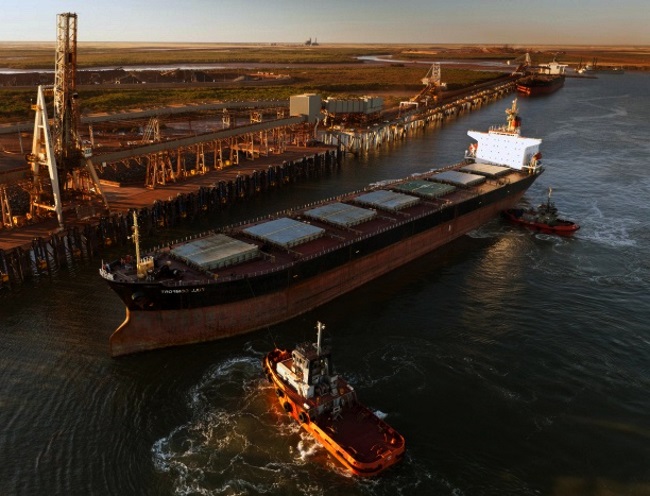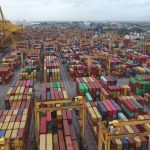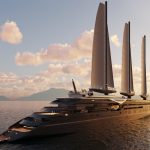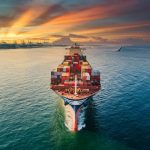Japan’s Chubu Electric Power Co. is in advanced discussions with BP on a Carbon Capture, Utilization And Storage (CCUS) project to sequester up to 20 million mt/year of CO2 in the Nagoya port area, with a potential fleet of some 20 liquefied CO2 carriers for transportation to Indonesia’s Tangguh, a top executive told S&P Global Commodity Insights.
In an exclusive interview with Commodity Insights in Tokyo, Hiroki Sato, Senior Managing Executive Officer and Division CEO of Global Business, said Chubu Electric now expects to start up the CCUS project with BP in 2030, with an eye to “make a final investment decision in around 2026 or 2027” after establishing a detailed project structure.
The CCUS project envisages capturing 5 million mt to 20 million mt/year of CO2 from the Nagoya port area in central Japan and liquefying and transporting it on up to 20 CO2 carriers, with a loading capacity of 50,000 cu m to 80,000 cu m, toward 2050, Sato said.
Chubu Electric has finished a feasibility study with BP for the project, which had initially targeted the capture of around 3 million mt/year of CO2, or roughly 10% of the Nagoya port’s annual CO2 emissions, when it was first announced in February 2023.
“In the process of the FS, we have sought the range of 5 million mt to 20 million mt/year in the timeline towards 2050 while pursuing the scale economics to a certain extent,” said Sato, adding that this level would help cut the overall project costs, offsetting an increased cost from a larger number of vessels in the fleet.
“We are looking at developing a fleet of 20 carriers of around 50,000 cu m to 80,000 cu m per carrier,” Sato said, adding that this is the scale of a fleet needed to transport 20 million mt/year of CO2 from Nagoya to Tangguh.
Building liquefied CO2 carriers would take two years each, depending on the availability of shipways, he said.
“We used a low-temperature and low-pressure [tank] as a presumption for the FS,” Sato said, when asked about what type of liquefied CO2 tank would be used on the potential carriers.
Even as a final decision has not been made, Sato’s remarks represent the first public indication of considering low-temperature and low-pressure tanks, ahead of the world’s first transport of CO2 on a 1,450 cu m low-temperature and low-pressure liquefied CO2 carrier over 1,000 km in Japan in a series of trial voyages from October.
Project structures
Following the feasibility study, Chubu Electric and BP will next “carve out the overall project structures including technological aspects of ships and a structure to gather [CO2] from emitters,” Sato said.
The two companies have yet to clarify each role in the “full value chain” of the CCUS project, involving capturing CO2 from customers, having it piped to a terminal in Chita and transporting it on ship and inject it into an underground storage site in Tangguh and having it monitored to see any leakage, Sato said.
In Tangguh, BP is developing what will be Indonesia’s first CCUS project, with an ultimate 1.8 gigatons of CO2 storage capacity and the aim of becoming a CCS hub for domestic and international emitters.
“In case of Chubu, we hope to get involved with the full value chain to accumulate our expertise on [CO2] storage abroad,” Sato said, adding that its participation in the full value chain would also help it understand overall costs.
Sato said that Chubu Electric has also sketched out a business model for generating revenue from receiving CO2 from customers and transporting it for storage abroad, upon authentication of the project being counted as part of Japan’s decarbonization efforts.
As for utilization of captured CO2, Chubu Electric is looking at possibilities, including supplying
captured CO2 to “a major city gas company in Nagoya port” to produce e-methane, which is now known as e-NG (electric natural gas), Sato said.
Noting that the Nagoya port area emits around 32 million mt/year of CO2, of which close to 90% comes from the power generation and steel sectors, Sato said CCS could be a key decarbonization solution, especially for hard-to-abate sectors.
For Sato — once known as “Mr LNG” in the industry, when serving as chief fuel transactions officer at JERA, in which Chubu Electric has a 50% stake — there is an affinity between developing CCUS projects and LNG projects.
“This is exactly a reverse flow of value chain from liquefying gas and bringing it to Japan and regasifying and burning it to capturing CO2 and liquefying and transporting it, which will be stored after regasifying it,” Sato said.
Source: Platts






